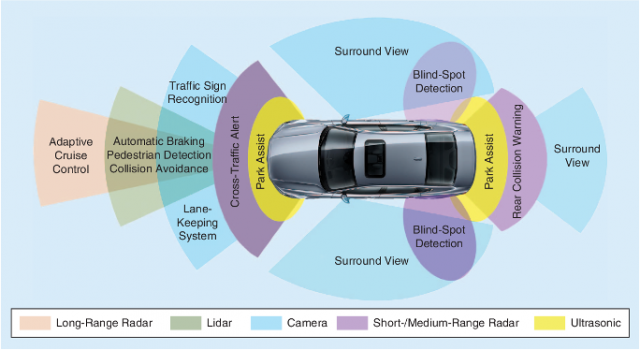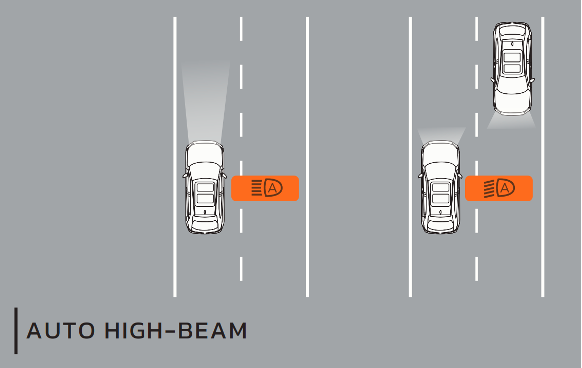Advanced Driver-Assistance Systems (ADAS)
ADAS are designed to lessen the possibility of auto accidents brought on by human error and to give automakers time to prepare before introducing autonomous vehicles in the future. Based on how they operate, ADAS can be classified into two primary groups as active safety features: automatic actions and driver notice. Several brands of car in Indonesia, such the Honda CR-V Prestige, Hyundai Stargazer Prime, Hyundai Creta Prime, Kijang Innova Zenix Q Hybrid, Toyota Voxy, and many others, come with ADAS as standard equipment.
Advanced Driver-Assistance Systems (ADAS) are a group of safety systems that work together to make sure that driving a car is safe. Adaptive Cruise Control, Blind Spot Monitoring, Rear Cross Traffic Alert, Pre-Collision System with Automatic Emergency Braking, Pedal Misoperation Control, Lane Departure Warning with Lane Keeping Assist, Driver Attention Alert, Front Vehicle Departure Notification, and Automatic High Beam are all examples of these support safety systems (Figure 1).

Figure 1. Advanced Driver-Assistance Systems
Source: Kukkala, Tunnell, Pasricha, & Bradley (2018)
Adaptive Cruise Control: Automatically changes a vehicle's speed to keep a safe distance from the car in front of it. When this function is turned on, the driver can select a maximum cruising speed to limit the vehicle's speed.
Blind Spot Monitoring: determines whether or not there are other vehicles on the left and right rear sides. Other automobiles in those two spots are sometimes obscured by the rearview mirrors.
Rear Cross Traffic Alert: When a vehicle is reversing, it identifies whether or not other vehicles are passing behind it. The same sensors are used in this feature as in Blind Spot Monitoring.
Adaptive Cruise Control: Automatically changes a vehicle's speed to keep a safe distance from the car in front of it. When this function is turned on, the driver can select a maximum cruising speed to limit the vehicle's speed.
Blind Spot Monitoring: determines whether or not there are other vehicles on the left and right rear sides. Other automobiles in those two spots are sometimes obscured by the rearview mirrors.
Rear Cross Traffic Alert: When a vehicle is reversing, it identifies whether or not other vehicles are passing behind it. The same sensors are used in this feature as in Blind Spot Monitoring.
Headlamps with automatic high beam. Low beam headlights are used when a car is following another vehicle or passing / facing another vehicle from the other direction. If not, it employs high beam headlights for improved visibility (Figure 2).
 |
 |
Figure 2. Auto High-Beam & Low-Beam
Source: Honda HRV Brochure [2] & techinfo.honda.com [3]
Keep in mind that even with the assistance of the features indicated above, the driver must keep concentrate and focus on the road and the surroundings of the vehicle.
It would be ideal if ADAS were also used in trucks and buses, as they have more blind spots and are more difficult to operate than cars.ADAS will become more popular and advanced in automobiles in the future. ADAS will also include more advanced image recognition in the future, such as unmarked lane recognition with image segmentation. For many vehicles, ADAS will evolve from driver assistance and safety features to automated driving features. As a result, certain cars in the future will lack pedals and steering wheels.Perhaps in the future, ADAS systems will be available as a separate drone that follows the car and, when necessary, delivers directions to the car.
References
[1] Kukkala, V., Tunnell, J.A., Pasricha, S., & Bradley, T.H. (2018). Advanced Driver-Assistance Systems: A Path Toward Autonomous Vehicles. IEEE Consumer Electronics Magazine, 7, 18-25.
[2] https://www.honda-indonesia.com/brochures/15/download, accessed 22 August 2023
[3] https://techinfo.honda.com/rjanisis/pubs/QS/AH/ATWA1919WG/enu/GUID-BD9042C7-0F9B-4D27-9AE6-A663ED81CEC5.html, accessed: 22 August 2023

Comments :